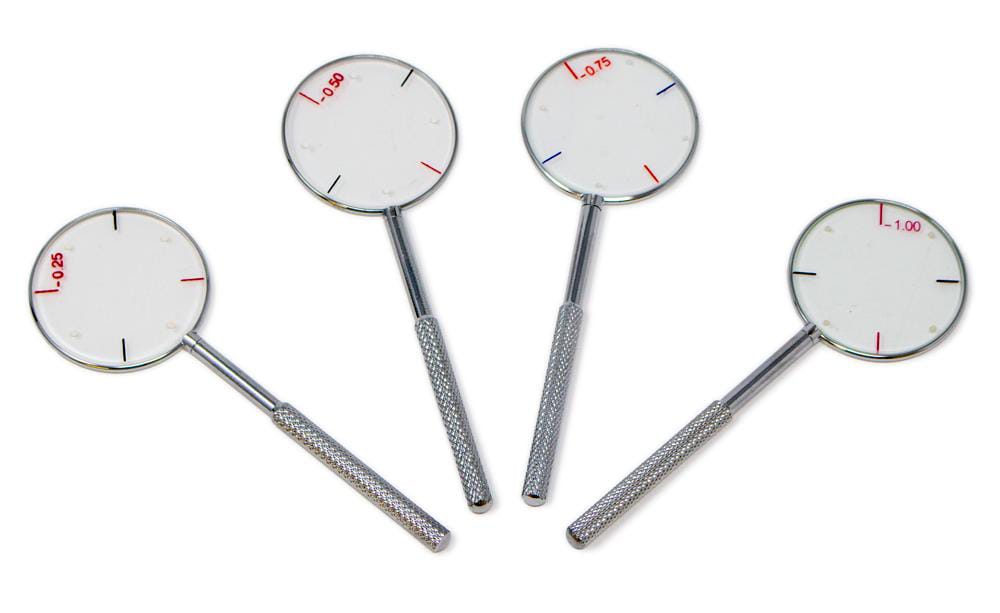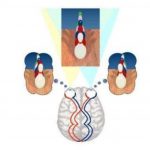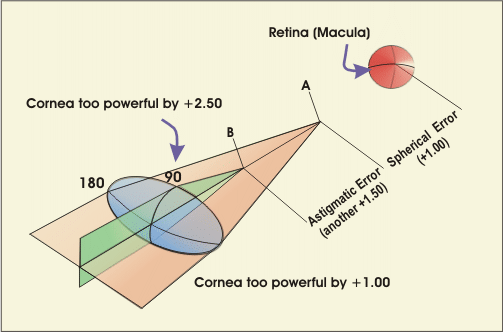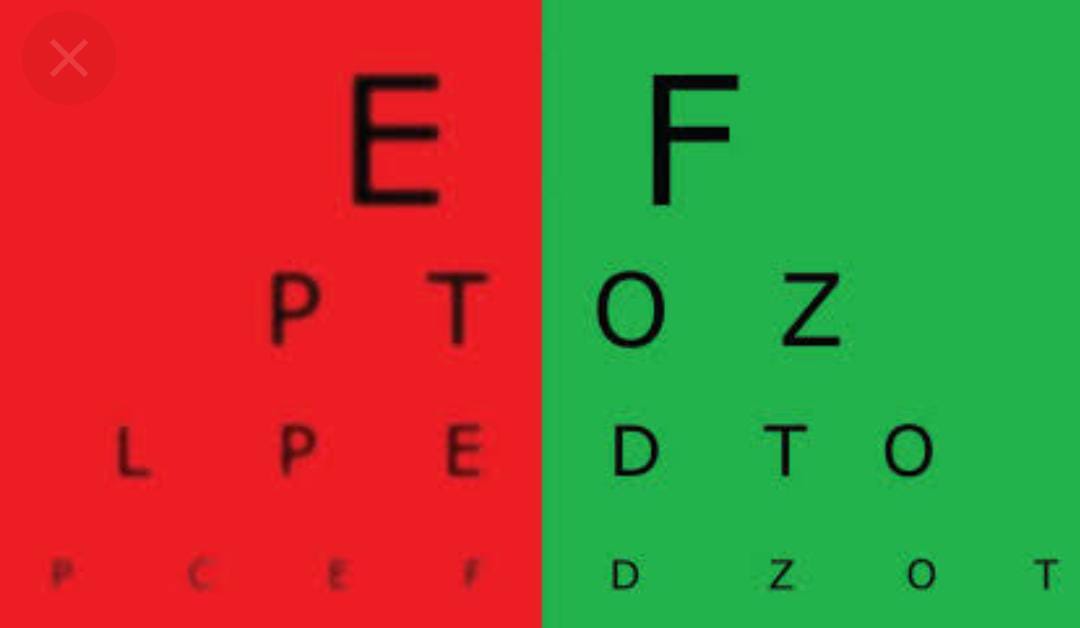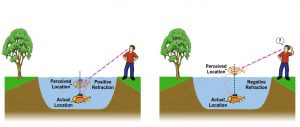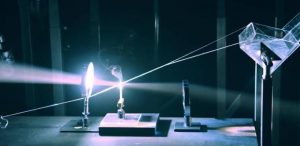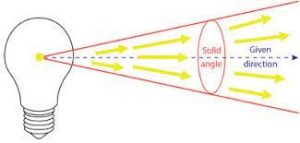Jackson cross cylinder is a single low power lens, which is a combination of
a plus cylinder and a minus cylinder of equal power with axis perpendicular
to each other, with a handle placed between the two axes at 45
degrees. Therefore ,JCC is a spherocylindrical lens in which the power of
the cylinder is double the power of the sphere and of opposite sign e.g.
+0.5DS/-1.0DC or +0.25DS/-0.5DC. JCC are available in different powers
including +/-1.00, most commonly used are of +/- 0.25 and +/- 0.50. There
are dots or lines to indicate axis of minus and plus powers.
Jackson cross cylinder of +/- 0.25 diopter
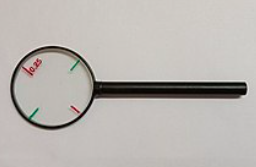
Indication:
The Jackson cross cylinder is used to determine corrective lens power and its axis in patients
with astigmatism. It is also used for testing near point of the eye.
Procedure:
Best corrected vision with a spherical lens should be identified before using a Jackson cross
cylinder. In case of astigmatism the best vision with a spherical lens is obtained when the circle of
confusion is on the retina.
Detecting astigmatism
Best corrected vision with a spherical lens should be identified first. The JCC lens is then placed
over spherical lens first with the minus-cylinder axis at 180°, and then with the axis at 90°.If there is
no difference in vision, repeat the test with JCC lens axis 45° and 135°. If the patient again reports
no difference in vision, there is no astigmatism and if there is improvement in either positions
cylindrical lens should be tried to correct astigmatism.
Refinement of axis
Refinement of axis of cylindrical lens in astigmatism correction is done by placing JCC along with
corrective lens with the handle parallel to the axis of corrective lens in the trial frame. Handle is
rotated so that the minus and plus lens in cross cylinder interchanges. If there is no difference in
vision in either position, the axis of corrective lens is correct and if there is difference in vision, axis
should be rotated to get a clear vision.
Refinement of power
Refinement of power of cylindrical lens in astigmatism correction is done by placing JCC along with
corrective lens with the axis of JCC power parallel to the axis of corrective lens in the trial frame.
Handle is rotated so that the minus and plus lens in cross cylinder interchanges and if there is no
difference in vision in either position, the power of corrective lens is correct and if there is difference
in vision, power should be adjusted.
Near point of accommodation
The uniocular and binocular cross cylinder findings at 40 cm give information about near point
of accommodation and near addition needed to corrected presbyopia.
Objectives:
Summarize the history of the Jackson cross cylinder.
Explain the optical principle of the conoid of Sturm.
Identify the different types of astigmatism.
Review the process of refining the cylinders obtained in
refraction using the Jackson cross cylinder.
Astigmatism
Astigmatism results from a difference in curvature of the key components of the
eye's refractive system, which include the cornea and the lens. In astigmatism, the
rays of light do not have a point focus on the retina, thus creating a blurry image.
There are two foci that, in principle, do not fall at the same location, which gives
rise to different forms of astigmatism. The distance between the foci is termed the
"conoid of Sturm".
Before the JCC can be effectively used, the circle of least confusion must be
positioned on the retina, which is the smallest point that can be formed by a lens
system, and the closest an astigmatic eye can come to achieving a clear image. The
center of least confusion is referred to as the "center of the conoid of Sturm."
Astigmatism can be divided into the following five types, which are
based on the location of the foci:
Simple myopic astigmatism (See image): is where one of the foci is in front of the retina
while the other focus is on the retina.
Simple hyperopic astigmatism (See image): in this case, one of the foci is behind the
retina at a virtual location while the other focus is on the retina.
Compound myopic astigmatism: this type of astigmatism is present when both foci are in
front of the retina and are at different locations.
Compound hyperopic astigmatism: this condition is present when both foci are at
different locations behind the eye.
Mixed astigmatism: this astigmatism results when the refractive media creates two foci.
One focus is positioned in front of the retina, and the other is behind the retina.
Astigmatism can also be categorized based on the following
causes (i.e., the refractive media):
Corneal astigmatism: this is when the cornea is not evenly shaped, thus
resulting in a difference in the refraction of light from the meridians.
Lenticular astigmatism: the refractive surface of the lens is not equal in this
type of astigmatism.
Function:
The primary function of the JCC:
1. To refine the astigmatic power.
2. To detect astigmatic axis and power in the absence of other tests such as retinoscopy.

